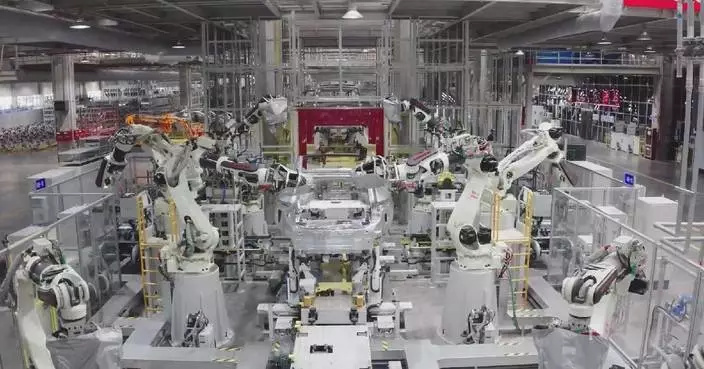China has scaled up efforts to lower the incidence of the Alzheimer's disease by promoting early screening, using by advanced technologies and comprehensive medical tests.
Alzheimer's disease is a mentally handicapped disease with complex etiology. Data showed that by 2022, there were around 10 million patients with Alzheimer's disease in China.
In recent years, the incidence rate of Alzheimer's disease in China has been increasing. The incidence rate in people over 65 years old stands at about 5 percent, and the rate increases by 5 percent for every other 10 years of age, and the rate reaches 30 percent for people over 80 years old.
For the global community, the prevention and treatment of the disease has been fraught with challenges, including unknown causes, no effective or curable treatment measures. It may take decades to manifest from the onset of the disease to the onset of symptoms, which makes early screening of the disease critically important.
"Our focus now is on the very early stages. When the patient does not have any clinical symptoms, we can use these diagnostic methods to identify these patients, and then provide advice and intervention based on their lifestyle and other manifestations. In this way, the incidence rate will definitely decrease, and the number of patients will be reduced," said Wang Jun, president of the China Association for Alzheimer's Disease.
Data showed that only 15 to 20 percent of patients with Alzheimer's disease in China have been diagnosed and treated. One of the important reasons is that the original brain aging assessment method is relatively backward, which limits the level of clinical early screening and early diagnosis.
With the progress of medical science and technology, more cutting-edge technologies have begun to be applied in the diagnosis and treatment of the disease.
Beijing Tiantan Hospital launched research on establishing a multidimensional assessment system for brain aging in June this year.
The hospital's interactive technology laboratory uses human three-dimensional posture recognition, eye movement analysis and other sensing technologies, combined with artificial intelligence algorithms, to comprehensively assess the motor function, cognitive function and cerebrovascular status of the elderly, providing a scientific basis for the early identification of abnormal brain aging.
"We record the entire movement process with our high-speed camera, and then analyze the changes in stride length, speed, and swing during each gait. We break these down and see to what extent it will decrease," said Zhao Xingquan, director of the neurology center of the Beijing Tiantan Hospital.
There are about 10 years without obvious symptoms before the elderly start to developing movement abnormalities and cognitive dysfunction, which allows time for early prevention, said researchers.
"With technological advancement, we hope to apply these technologies not only in hospitals at an early stage, but also at home. For example, depth cameras and VR helmets with eye movement functions can be worn by the elderly daily or with related cameras at home to capture such abnormalities," said Tian Feng, researcher at the Institute of Software under the Chinese Academy of Sciences.
As Alzheimer's disease is the most common progressive neurodegenerative disease that will continue to worsen, the significance of early screening is even more prominent, said researchers.
"For such kinds of diseases with relatively poor long-term prognosis, early screening, early diagnosis, and early intervention are extremely important and valuable. Therefore, our scale combines eye movement and gait detection technology, which is more optimized, more sensitive, and relatively non-invasive. This method has relatively low economic costs. It provides a very good tool for us to move forward in treating this type of disease in the future," said Ju Yi, deputy director at the neurology center of the Beijing Tiantan Hospital.

China steps up early screening of Alzheimer's disease










